No Results Found
The page you requested could not be found. Try refining your search, or use the navigation above to locate the post.
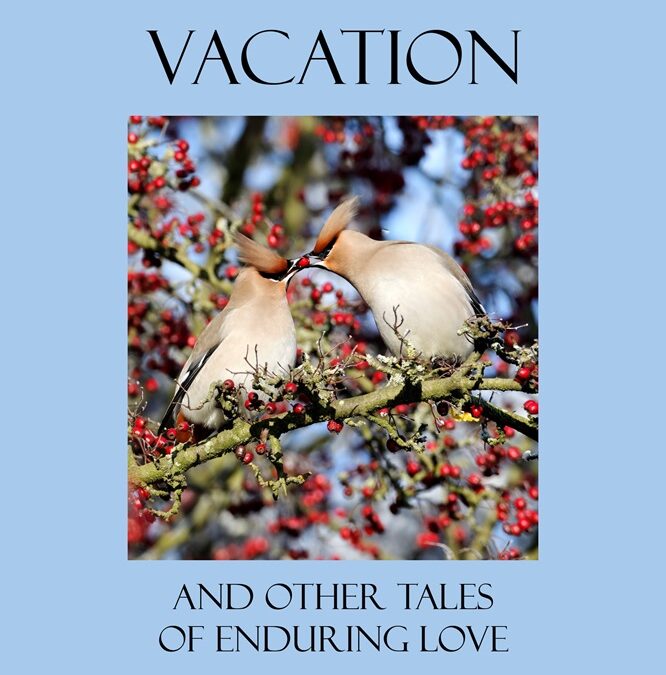
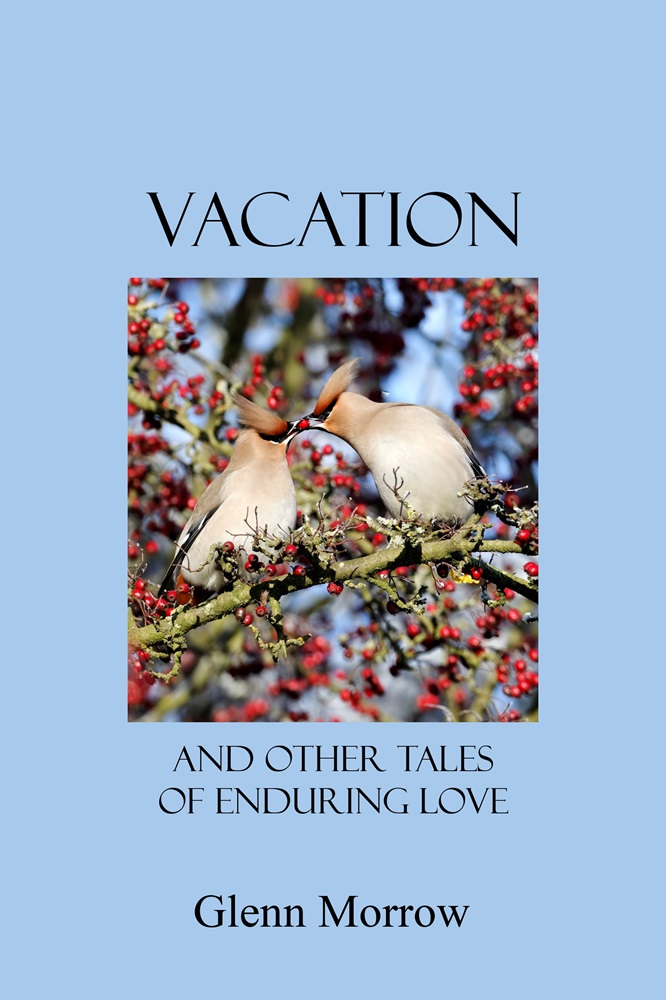
We are not meant to travel through our lives alone. These are tales of the sustaining power of love. Whether we are descending into the Grand Canyon on muleback or lost in Venice with absolutely no sense of direction, a journey shared is the best vacation. Four stories, four couples, four seasons of life. A grade school teacher and a tankful of tadpoles. An old man suddenly compelled to build an enormous private garden. These tales are mysterious, poignant, absurd, and, in their own way, heroic. As all love stories are.
“Mr. Coe’s Garden”: Curtis, a teenager, is hired by the very elderly and very quirky Mr. Coe for a mysterious summer job: transforming Mr. Coe’s entire back lawn to an enormous, carefully structured flower garden. Mr. Coe tells Curtis that the garden is a love gift for his wife, the strangely absent Mrs. Coe. Buried in the center of the garden is a time capsule recording the Coe’s love for each other at a moment when they thought they would perish. Now, decades later, Curtis wonders whether Mrs. Coe is still alive, and if not, why Mr. Coe continues to speak of her in the present tense. And why is the garden they’re building so huge?
“Frogs”: Danielle is an exemplary elementary school teacher. Her husband loves her and her commitment to her students. She has launched a semester-long classroom project of observing tadpoles turn into frogs. Meanwhile, she is undergoing her own metamorphosis; she is in the early stages of pregnancy. In order to get pregnant, she had to discontinue a medication that might have otherwise harmed her unborn child. The medication prevented episodes of a chronic condition. When she begins to have incidents in the classroom, she and her husband must confront the question of whether continuing teaching is possible or desirable, and each must make a decision.
“Vacation”: Thomas is a theologian who has just published a proof of the existence of God, referencing recent scientific theories. His wife Grace proposes that this is a great time for them to take a vacation, riding mules down the steep trail into the Grand Canyon. When they arrive, their reservations for this trek are lost and their mules given to others. To their rescue comes a mysterious seven-foot-tall man who brings them good news. He mounts them on mules that officially don’t exist and leads the couple on an exclusive tour down the trail into the canyon. Thomas, the theologian, is increasingly aware of the spooky nature of time along this route. Halfway down the canyon trail their seven-foot guide predicts to Thomas a terrible accident that will befall their troubled adult son Rafe, a tragedy that Thomas knows will crush his beloved wife Grace. Thomas realizes the seven-foot man (who may or may not be an angel) has the power to turn aside this tragedy. But Thomas must, like Jacob, wrestle with the angel to receive this blessing.
“Navigation”: Lewis has absolutely no sense of direction. Truly he is so pathologically geographically challenged that he needs to use curious self-drawn maps to keep from getting lost in even familiar places. So, naturally, he is a graduate student studying the mathematics of GPS systems. Getting lost on campus he meets and falls in love with Robin, an ornithologist studying how migratory birds navigate. They decide to take a romantic trip together to Venice, where Lewis’ sister is working. Venice is, of course, the place where everyone gets lost. In Venice, Robin suddenly disappears, and Lewis, who can’t find anything, must find her. Lewis knows that Robin hasn’t left him by choice. Drawing on his love for her and a rogues’ gallery of informants, he unravels the bizarre events of her vanishing to find Robin once again.
Paperback $14.95 | Kindle $9.99
“A compact but moving collection that will stay with readers long after they close the book.” – a Kirkus review of Vacation and Other Stories. (January 15, 2025). To read the full review, click here.
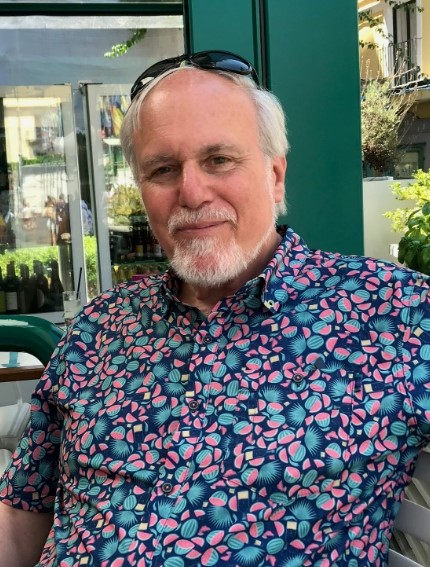
Crafting prose has always been Glenn Morrow’s occupation and delight. He is the author of Things Beloved: Two Short Novels, also published by En Route Books. He has worked as a teacher, advocacy journalist, editor of Storytelling Magazine, and software technical writer. He learned from his Ukrainian grandmother long ago that life is too precious to be taken entirely seriously. He believes that good fiction is a gift that offers hope and clarity. All characters and situations in this book are entirely the product of his imagination. He resides in coastal Rhode Island with his wife Deborah—when they are not on vacation.
The page you requested could not be found. Try refining your search, or use the navigation above to locate the post.
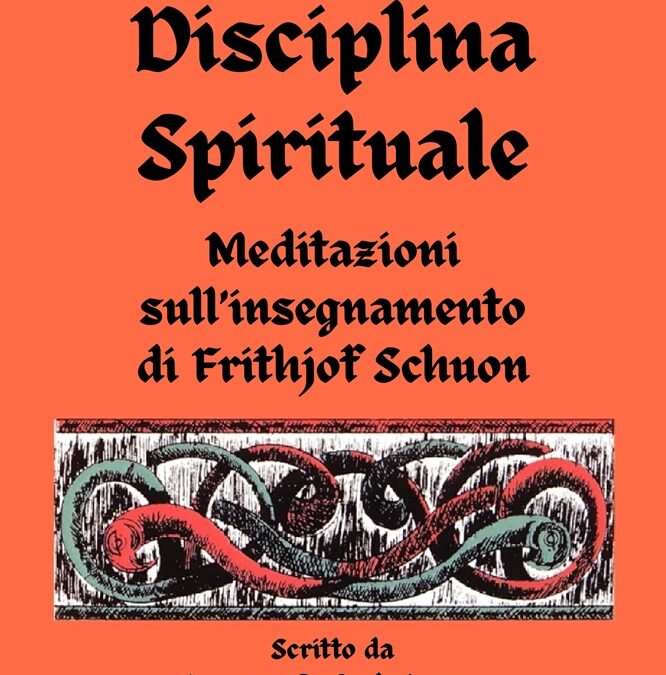
Si tratta di un’introduzione alla scuola perennialista della filosofia religiosa comparata e di una guida per il lettore generale che cerca risposte intellettualmente serie ma accessibili alle domande sulla vita spirituale.
Due libri in uno, La disciplina spirituale è un’introduzione per gli studiosi alla scuola perennialista della filosofia religiosa comparata e allo stesso tempo una guida per il lettore generale che cerca risposte intellettualmente serie ma accessibili alle domande sulla vita spirituale.
Gli studiosi troveranno un’introduzione completa all’opera di Frithjof Schuon, la principale figura contemporanea della scuola perennialista o tradizionalista della religione comparata. Scritto da James S. Cutsinger, una delle massime autorità accademiche della filosofia perenne, il libro fornisce un commento dettagliato sull’intera gamma degli scritti spirituali di Schuon.
Ma il libro si rivolge anche ai lettori curiosi e alla ricerca in generale. Composto in uno stile semplice e colloquiale, si presenta come una lettera aperta agli studenti dell’autore. L’obiettivo è quello di tagliare con la banalità di molti insegnamenti spirituali odierni e di fornire risposte intellettualmente serie ma accessibili a domande tipicamente poste da cinici e scettici, credenti conservatori e persone attratte dalle cosiddette religioni “new age”.
I consigli dell’autore assumono la forma di una serie di meditazioni su Verità, Virtù, Bellezza e Preghiera, che Schuon considera gli elementi fondamentali di ogni autentico cammino spirituale. I temi affrontati, sia teorici che pratici, comprendono le prove di Dio, il problema del male, le virtù classiche, la predestinazione e la libertà, il simbolismo e la gerarchia cosmica, l’arte sacra, il rapporto tra metodo spirituale e grazia, le tecniche di concentrazione e meditazione, il ruolo del maestro spirituale e il destino umano. Il libro si conclude con un epilogo sulla nota tesi di Schuon sull’“unità trascendente delle religioni”.
“Una magnifica introduzione al più grande pensatore religioso del nostro secolo”. — Huston Smith, autore di “ Le religioni del mondo”.
“Questo libro sarà ricordato con gratitudine dai migliori lettori come una chiave d’oro che spalanca le porte della fuga dalle tensioni interiori e dalla confusione mentale”. — Martin Lings, già custode dei manoscritti orientali del British Museum.
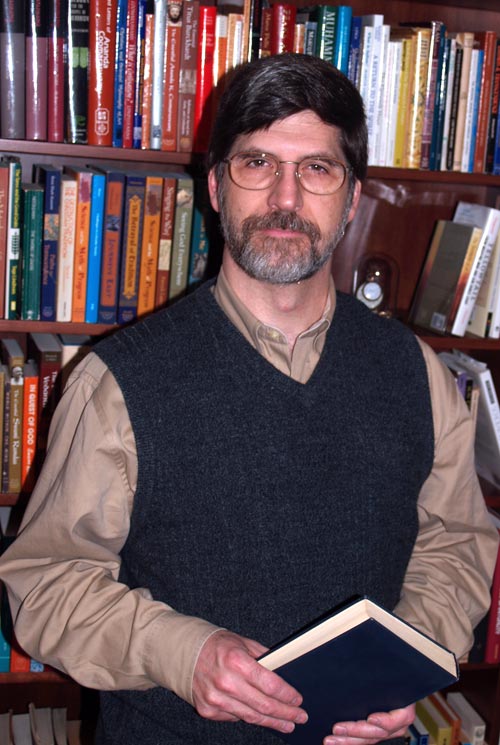 James Sherman Cutsinger (4 maggio 1953 – 19 febbraio 2020) è stato autore, editore e professore emerito di studi religiosi presso l’Università della Carolina del Sud, le cui opere si sono concentrate principalmente sulla religione comparata, sulla moderna scuola tradizionalista della filosofia perenne, sulla spiritualità cristiana orientale e sulla tradizione mistica della Chiesa ortodossa orientale.
James Sherman Cutsinger (4 maggio 1953 – 19 febbraio 2020) è stato autore, editore e professore emerito di studi religiosi presso l’Università della Carolina del Sud, le cui opere si sono concentrate principalmente sulla religione comparata, sulla moderna scuola tradizionalista della filosofia perenne, sulla spiritualità cristiana orientale e sulla tradizione mistica della Chiesa ortodossa orientale.
Marco Toti, nato a Roma nel 1976, è dottore di ricerca in “Tradizioni e Istituzioni Religiose di Ambiente Circum-mediterraneo”; è stato borsista “Fulbright” e presso l’Accademia dei Lincei; è stato giudicato idoneo come professore universitario di seconda fascia di “Storia delle Religioni” (abilitazione nazionale, 2013). Ha pubblicato vari lavori concernenti argomenti di mistica e religioni comparate, con particolare attenzione al metodo di orazione esicasta ed all’iconografia cristiano-orientale, oltre che alcune questioni inerenti al “lessico dell’ascesi” in epoca tardo-antica, agli anni ’60 in prospettiva storico-teoretica e storico-intellettuale (Concilio Vaticano II, “tradizionalismo”, “nuovi movimenti religiosi”), alla storiografia storico-religiosa (“ermeneutica” e “scuola di Roma”), agli Indiani d’America. Ha studiato, effettuato ricerche e tenuto conferenze e seminari presso varie università ed istituti europei e statunitensi; ha vissuto e viaggiato, tra l’altro, in Francia, USA, Grecia, Marocco e nel Sudest asiatico; ha scritto decine di articoli di alta divulgazione ed in ambito pubblicistico (costume, politica, Chiesa, letteratura, attualità, storia “occulta”). Ultimamente, oltre ad insegnare in istituti superiori, si sta occupando di prospettive “metapolitiche” e – nell’ambito di un più ampio discorso relativo al legame tra lessico mistico e storia culturale – dei temi della memoria, della tradizione e della malinconia come “stimmung” di Occidente.
The page you requested could not be found. Try refining your search, or use the navigation above to locate the post.
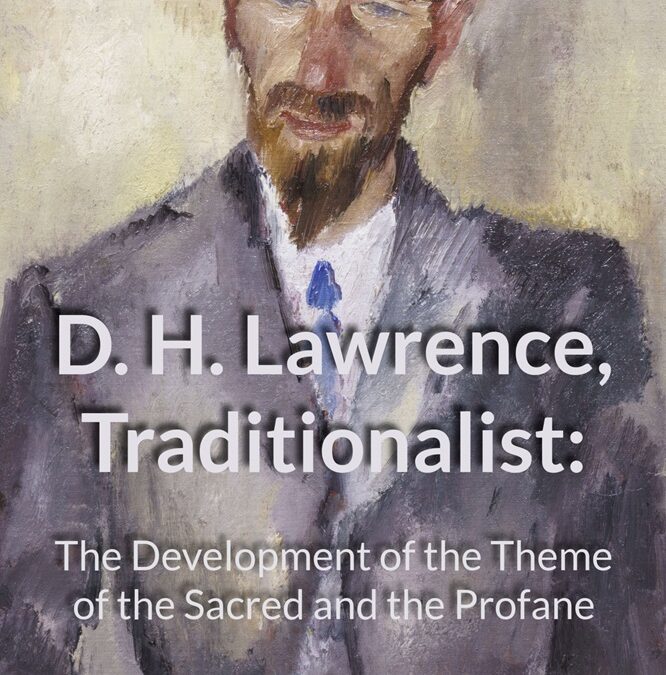
Paperback: $14.95 | Kindle: $9.99
TBA
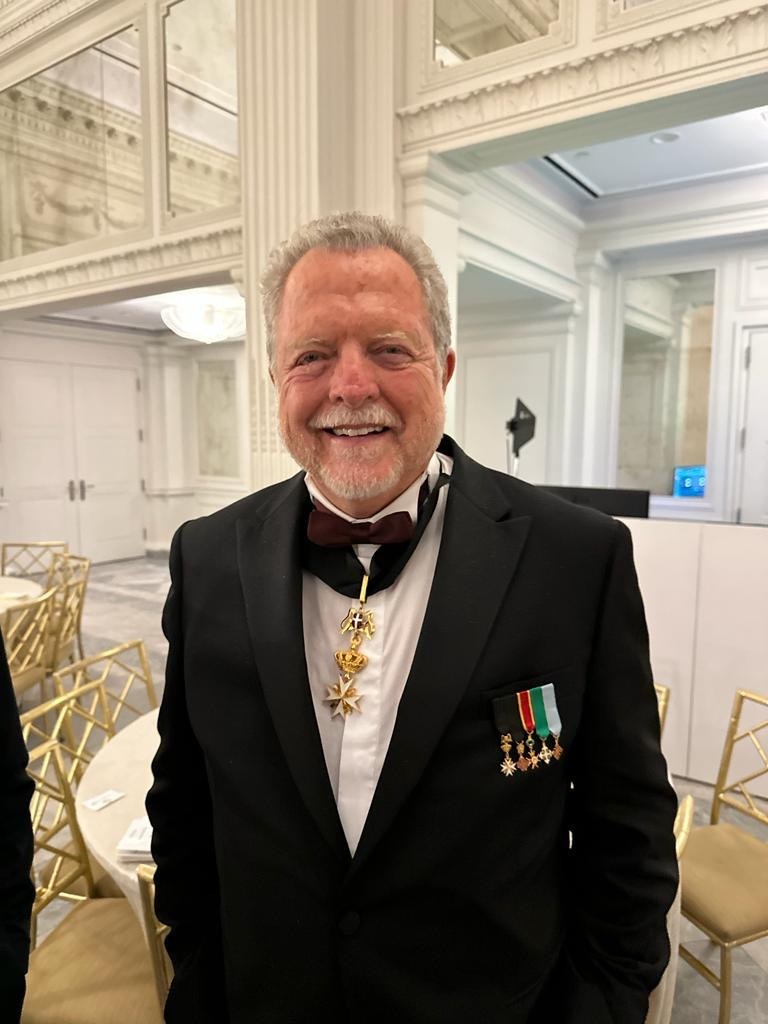
John Klink recounts some of the intriguing stories of his unique life of faith-based humanitarian service, diplomacy, finance, and politics which he attributes to gifts of Divine Providence that he would like to pass as a baton to future generations.
The grandson of 19th-century emigrant pioneers from the Kingdom of Württemberg and Ireland, he was born on October 8, 1949, on one of Wyoming’s oldest ranches. His paternal German grandfather’s Flag Ranch near Laramie hosted three U.S. Presidents and served as the departure point for Teddy Roosevelt’s famous 60 mi. compulsory horseback ride to Cheyenne with his Cabinet, while his maternal Irish family’s scion served as the first foreign-born U.S. Senator from Wyoming, and a pallbearer for his close friend Buffalo Bill. Following his father’s sales of the family ranches that ran from southern Wyoming to northern Colorado in 1952, his father made a precipitous move to a Bernard Maybeck home in Montecito near Santa Barbara which greatly influenced his love for architecture, art and music.
This move at a young age saw him growing up as a neighbor and friend to many luminaries of Hollywood, industry, and royalty where he says he felt strong similarities with the Beverly Hillbillies, but his family was steadied by his mother’s deep faith-life. During, and following a Jesuit education at Santa Clara University, Georgetown, and Loyola University in Rome, which sparked a lifelong devotion for the poor and refugees, he joined CRS, the Catholic equivalent of the Peace Corps, and served in North Africa, the Middle East, Asia, and the Caribbean. This led to postings in some of the poorest countries of the world, collaborating with St. Mother Theresa of Calcutta, and being Director of a refuge Program in Thailand charged with the care of 400,000 traumatized Khmer during the Cambodian Crisis.
He was then recruited by the Vatican, and subsequently the White House, to serve as a diplomat/negotiator for scores of United Nations World Summits and Conferences during the critical period of the fall of the Soviet Union and the rise of the European Union, became an advisor to Popes and Presidents, was elected President of the International Catholic Migration Commission, and with his wife Patricia began a sovereign securities firm on Wall Street.
John is quick to note that his fascinating, and at times highly challenging, experiences had little to do with his personal talents, but to his willingness to make himself available to Divine Providence without which he would have been a dusty but happy sheepherder on the Wyoming prairie to this day and sadly would probably not have met his beautiful wife with whom he recently celebrated their 37th anniversary in their home in Umbria.
Honors: Knight Commander of the Order of St. Gregory the Great, Knight of the Sovereign Military Order of Malta, Knight of the Equestrian Order of the Holy Sepulchre of Jerusalem, Knight of the Sacred Military Constantinian Order of St. George, Knight of Columbus (3rd Degree), and a Knight of Sts. Maurice and Lazarus. Royal Thai Armed Forces Award for Humanitarian Assistance to Displaced Persons in Thailand; 41st CRS Anniversary Award for Humanitarian Assistance; Legatus Ambassador Award.
The page you requested could not be found. Try refining your search, or use the navigation above to locate the post.

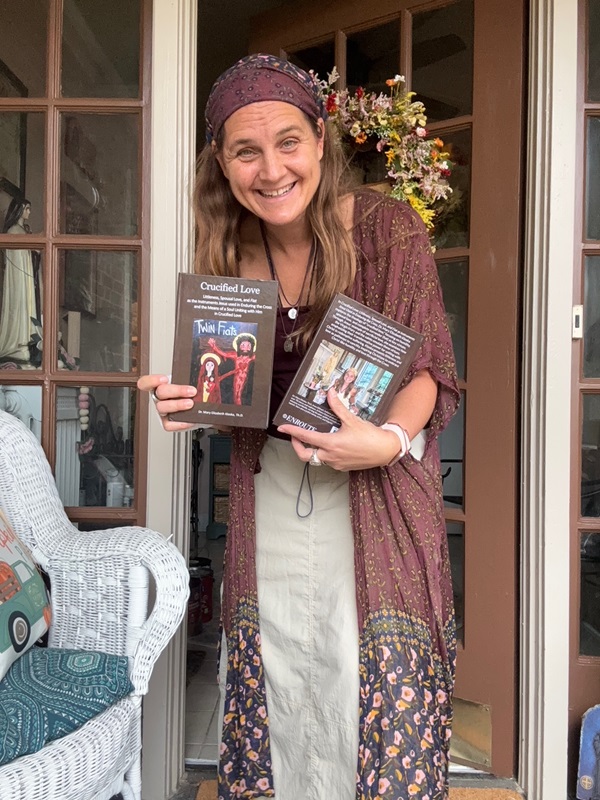
In Crucified Love: Littleness, Spousal Love, and Fiat as Instruments Jesus Used in Enduring the Cross, Dr. Mary Elizabeth Kloska explores the theology of “crucified love,” focusing on humility, spousal love, and complete surrender (fiat) as key virtues. Through Jesus’ example of sacrificial love, she examines how the Virgin Mary and the saints emulate these virtues, emphasizing their transformative power for uniting with Christ in redemptive suffering. Kloska presents littleness and love as pathways to sanctity, inspiring Christians to embrace Christ-like humility and love through the Cross.
Paperback: $24.95 | Hardback: $29.95 | Kindle: $9.99

Buy a pillow and email mahfood@wcatradio.com a photo of you holding it, and I’ll post your photo on this page with your message to Mary.
“With Marian wisdom drawn from some of the most powerful theological sources of our tradition, Dr. Kloska opens up a contemplation of the great mystery with fresh feminine genius. The fruit of her many years of faithful and adventurous dedication to the Lord come through these pages to stir wonder and gratitude toward God for the gift of virginity in the Church.” – Dr. Anthony Lilles, Academic Dean, Professor of Spiritual Theology, St. Patrick’s Seminary, Menlo Park, CA
“So beautiful! Might even become Mary Kloska’s masterpiece!” – Ronda Chervin, Ph.D., Catholic professor, author and presenter
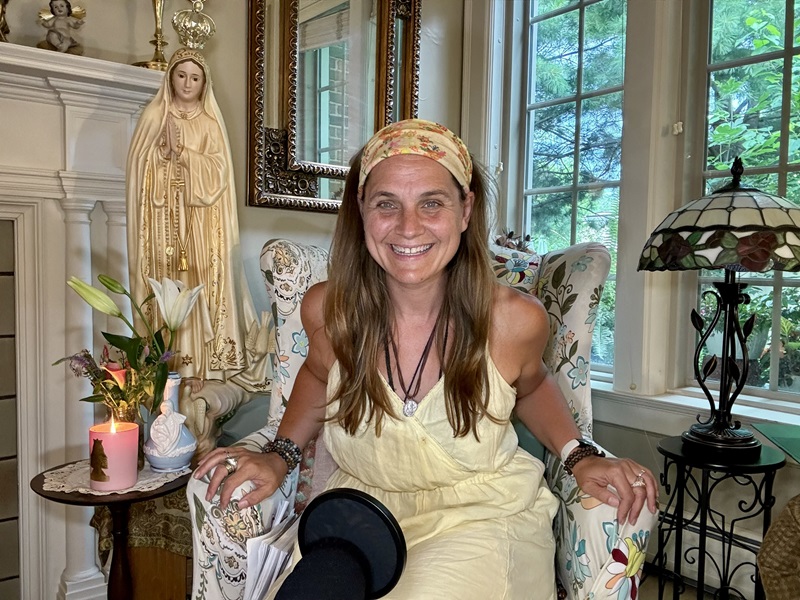 Dr. Mary Kloska, Th.D., is from Elkhart, Indiana. She was raised in a huge Polish family (12 brothers and sisters) along with a lot of foster babies and other needy people in and out of the house. She presently has 70+ nieces and nephews. She has lived a very unique life. Upon graduating from Notre Dame in 1999 she spent almost 20 years in the missions serving the poor (including orphanages) as well as praying as a consecrated hermit all over the world –Siberia, Nigeria, Tanzania, South Africa, Philippines, Mexico, the Holy Land and all over Europe as well. Although she spent a lot of time away in silence praying, ironically she loves children and is very fun and outgoing when it comes to serving young adults, as well as the little ones. She also spent her time in the missions giving retreats, doing simple catechesis, leading prayer groups, giving spiritual direction, helping in deliverance, changing diapers, feeding babies and cleaning floors. After spending intense time serving in a mission she would withdraw for periods of ‘retreat’ as a hermit (including three years as an official diocesan hermit with vows under a Bishop.) The last few years she has spent as a fulltime nanny to infant triplets, twins and several large families. She speaks many languages (poorly) and enjoys playing guitar, painting icons, baking, gardening, reading, writing and simply filling in where there is the greatest need in the Church. Her WCAT Radio program, “The Heart of Fiat Crucified Love,” may be found here.
Dr. Mary Kloska, Th.D., is from Elkhart, Indiana. She was raised in a huge Polish family (12 brothers and sisters) along with a lot of foster babies and other needy people in and out of the house. She presently has 70+ nieces and nephews. She has lived a very unique life. Upon graduating from Notre Dame in 1999 she spent almost 20 years in the missions serving the poor (including orphanages) as well as praying as a consecrated hermit all over the world –Siberia, Nigeria, Tanzania, South Africa, Philippines, Mexico, the Holy Land and all over Europe as well. Although she spent a lot of time away in silence praying, ironically she loves children and is very fun and outgoing when it comes to serving young adults, as well as the little ones. She also spent her time in the missions giving retreats, doing simple catechesis, leading prayer groups, giving spiritual direction, helping in deliverance, changing diapers, feeding babies and cleaning floors. After spending intense time serving in a mission she would withdraw for periods of ‘retreat’ as a hermit (including three years as an official diocesan hermit with vows under a Bishop.) The last few years she has spent as a fulltime nanny to infant triplets, twins and several large families. She speaks many languages (poorly) and enjoys playing guitar, painting icons, baking, gardening, reading, writing and simply filling in where there is the greatest need in the Church. Her WCAT Radio program, “The Heart of Fiat Crucified Love,” may be found here.
The page you requested could not be found. Try refining your search, or use the navigation above to locate the post.
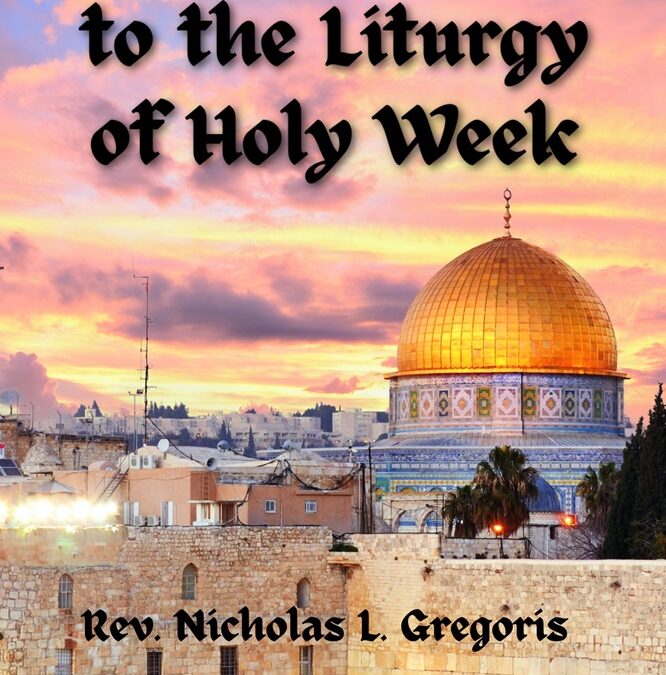
Rev. Nicholas L. Gregoris provides in this short volume four categories of reflection (anecdotal, historical, doctrinal, and devotional) on the Liturgy of Holy Week.
Paperback: $12.95 | Kindle: $9.99 | Bulk orders – order a stack of 100 for only $10 each with free shipping (Total: $1,000)
“A wonderful paradigm through which readers can learn liturgical theology with helpful ease, practical application, and an obvious invitation to grow spiritually.” – from the Foreword by Rev. Michael W. Davis, KCHS

The page you requested could not be found. Try refining your search, or use the navigation above to locate the post.